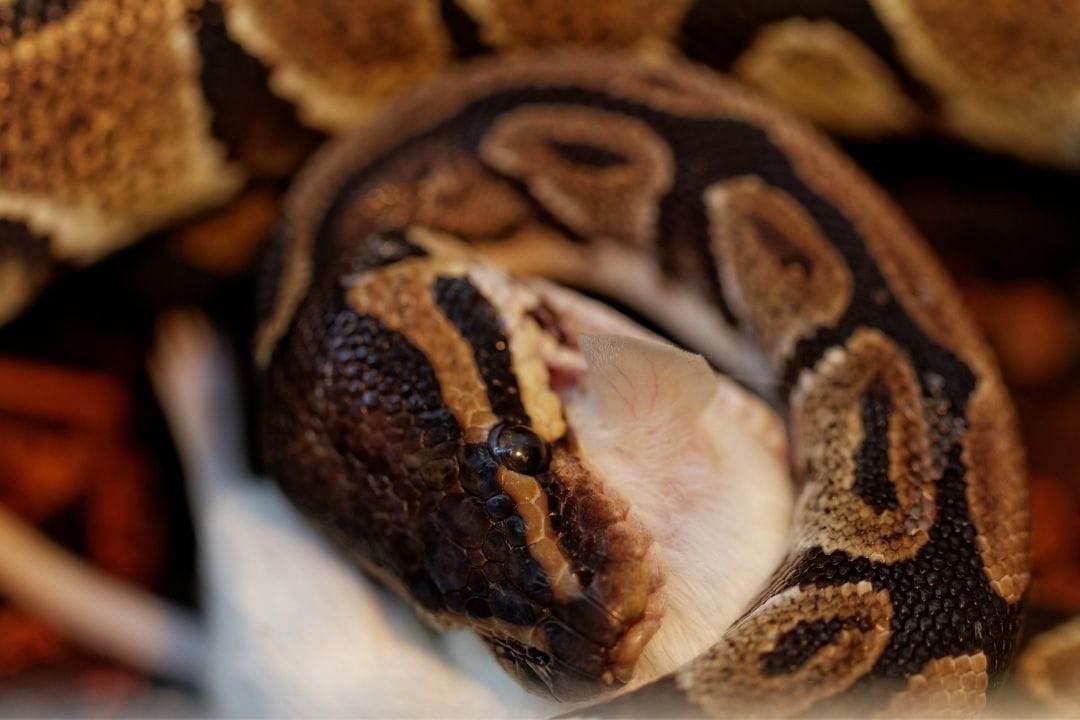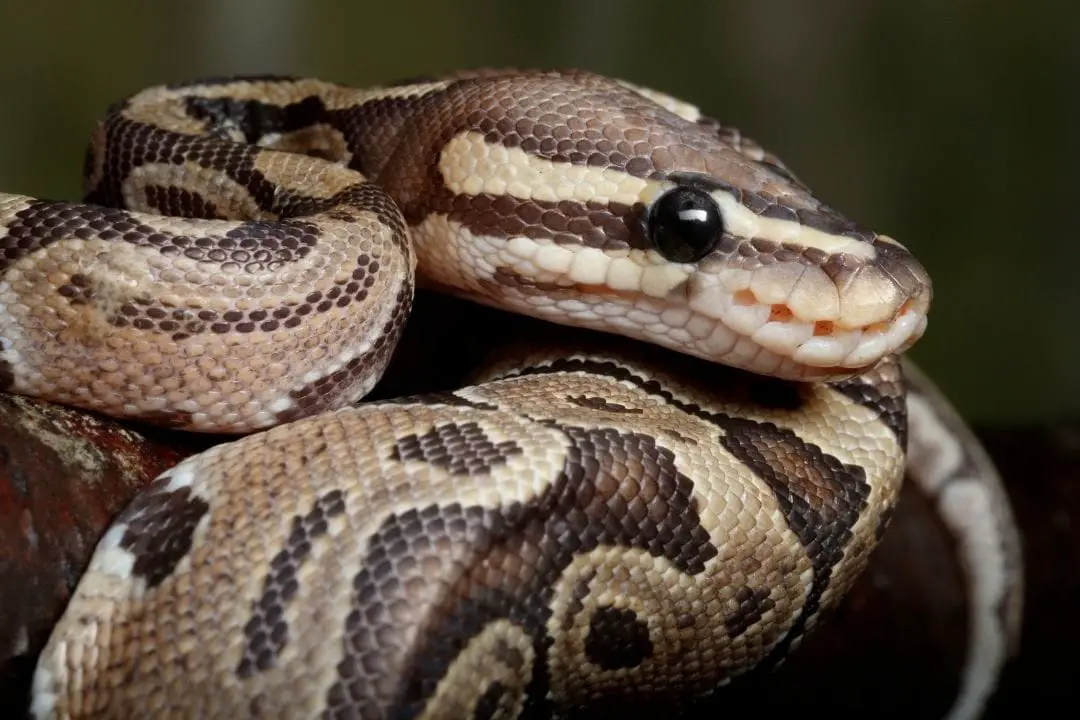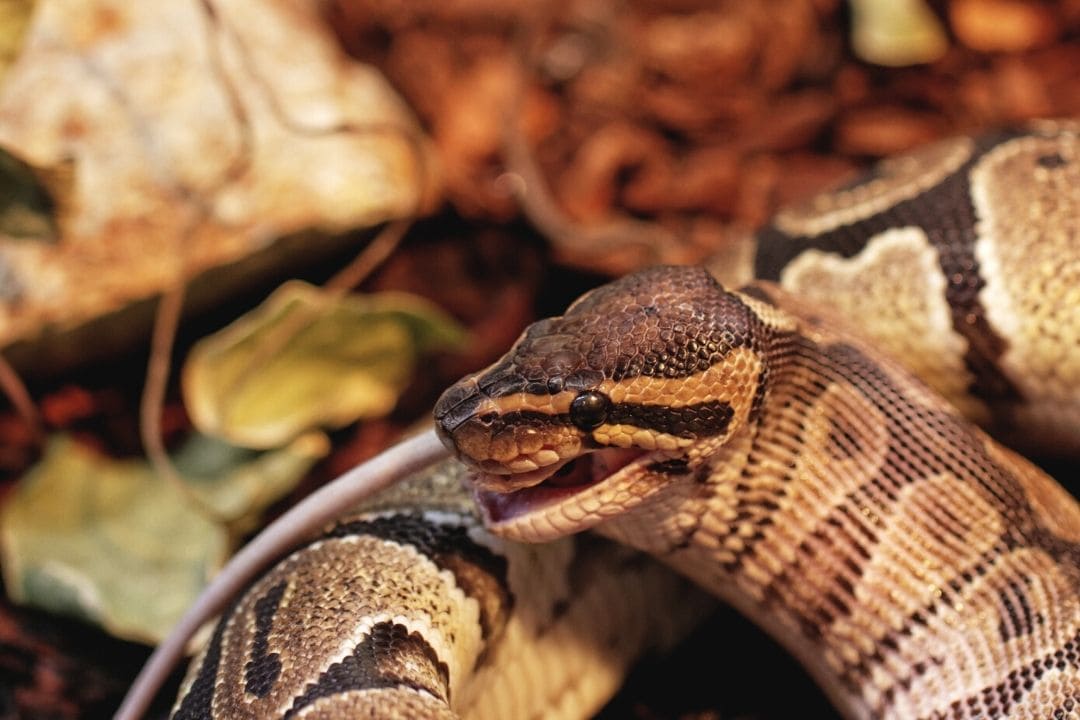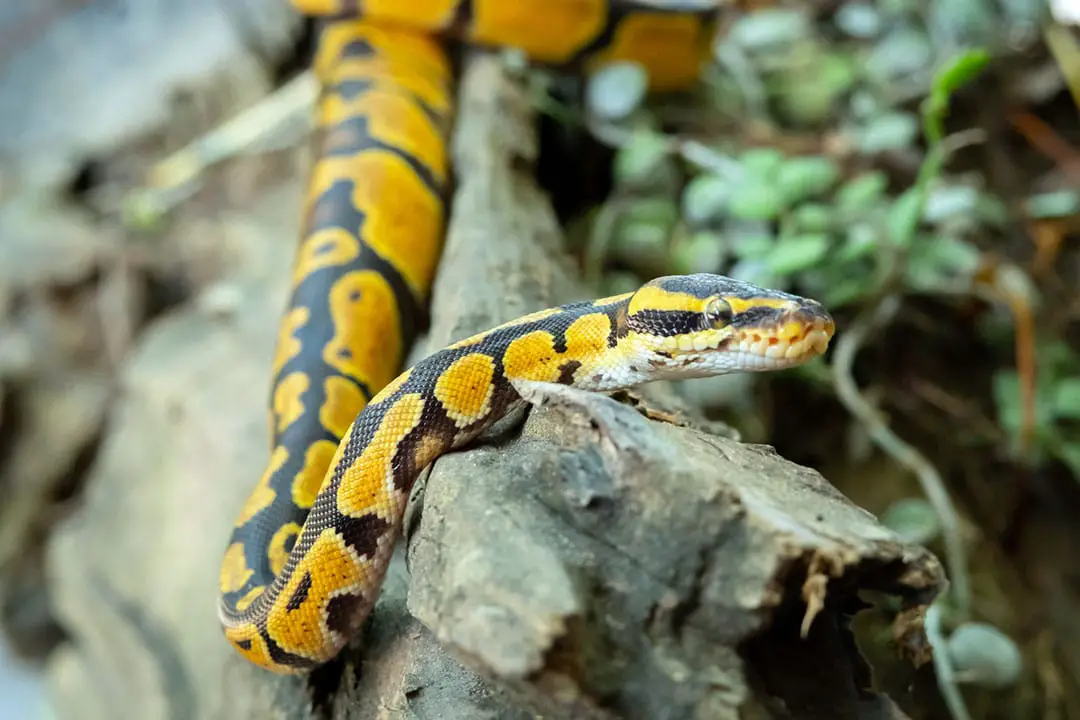Ball pythons (Python regius) are docile snakes that make great pets. However,they can be picky eaters. If your ball python isn’t eating, this list can help you determine why.
1. Stress
Stress will put any snake off its food. Ball pythons are typically shy and sensitive animals. Any big changes in their life will possibly start a feeding strike.
If your snake is new, you recently moved, or you just gave your snake a new enclosure, it will be stressed and need time to relax.
Give your snake at least two weeks to settle in. Too much handling can also stress out your snake, or a lack of hides.
Stressed ball pythons will ball up, so try to leave a balled up snake alone to relax. Loud sounds and other animals can also stress out snakes. Pets like dogs and cats are potential predators to your ball python, so keep them apart.
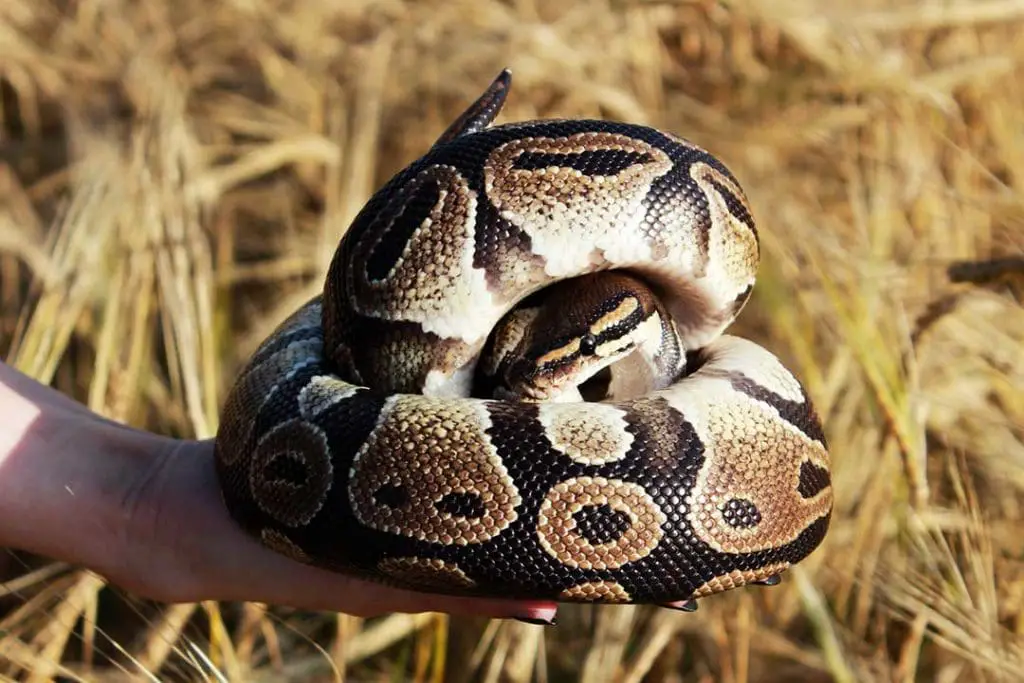
Loud noises including music will also upset snakes. While they can’t hear sound in the air very well,they are very good at detecting vibrations in their enclosure.
Try to keep your snake in a room with little traffic or noise.
2. Poor Conditions
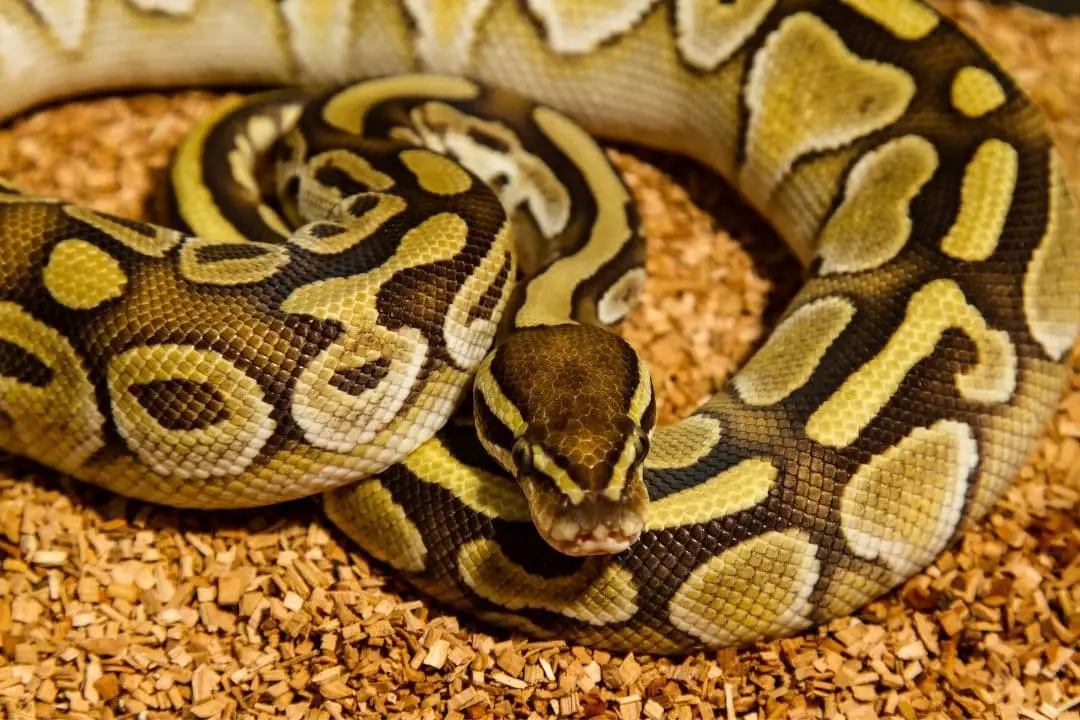
Everything you need to know about caring for Ball Pythons in captivity:
Read our Ball Python Care Sheet (Complete Setup & Guide)
Poor conditions will put your snake off its food very quickly. If the temperature in the enclosure is too low, your snake will not be able to digest its meal.
Cold snakes refuse to eat or will regurgitate since they naturally avoid eating when prey may rot in its stomach.
Use a temperature gun to check that your snake is at the right temperature. You can also observe where it spends its time to learn how you need to adjust the temperatures.
If your snake never leaves the warmest spot, it is too cold. Adjust your thermostat. Be sure to check humidity as well.
A dehydrated snake may be reluctant to eat. Getting all your conditions right is important for encouraging a reluctant python to eat.
The enclosure itself can also be a problem. If it is glass, your snake may feel too exposed.
Try covering the sides with background paper to make the enclosure feel less open. Adding branches and greenery to fill space will also help.
You need at least two hides that will completely hold your snake. If your snake is in a small enclosure, it may be reluctant to eat.
Many snakes want too stretch out after a meal.
If your snake cannot do this, it may refuse to eat. Snakes that have an opportunity to exercise may also be hungry more often since they burn nore calories.
3. Prey Pickiness
Ball pythons are notorious for being picky eaters. They frequently decide young what they are willing to eat and will be stubborn about any other type of prey.
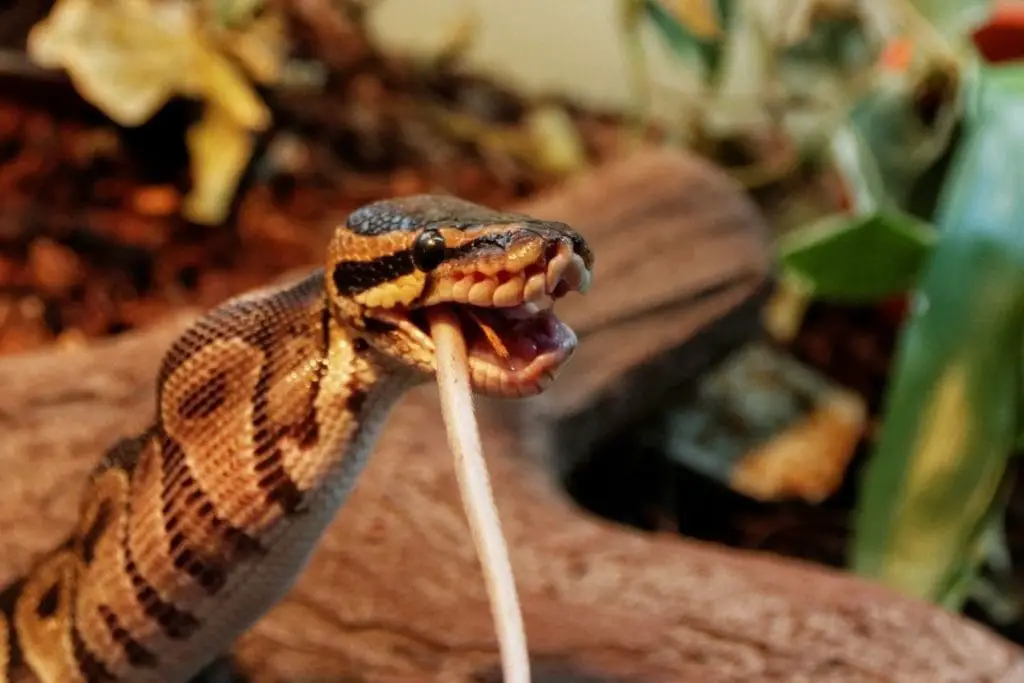
For instance, many ball pythons that are fed on darker rats will refuse to eat ones that are mostly white. They may not recognize the rat you are offering is food.
A snake that has been eating mice may also refuse to eat rats. Ball pythons can also be stubborn about switching from live to pre-killed or frozen food.
It can take a lot of patience and scenting to switch them over. Some ball pythons will also heavily prefer gerbils for prey.
They typically love gerbils, but they can be expensive and difficult to source compared to feeder rats.
4. Illness
Many illnesses in ball pythons can be easy to miss. One of the most common symptoms is a loss of appetite. If your snake suddenly stops eating, it could be sick and in pain.
Look for signs like more defensive behavior, wheezing, skin changes, and excess mucus or pus. These can all indicate a serious health concern that should send you straight to your reptile vet.
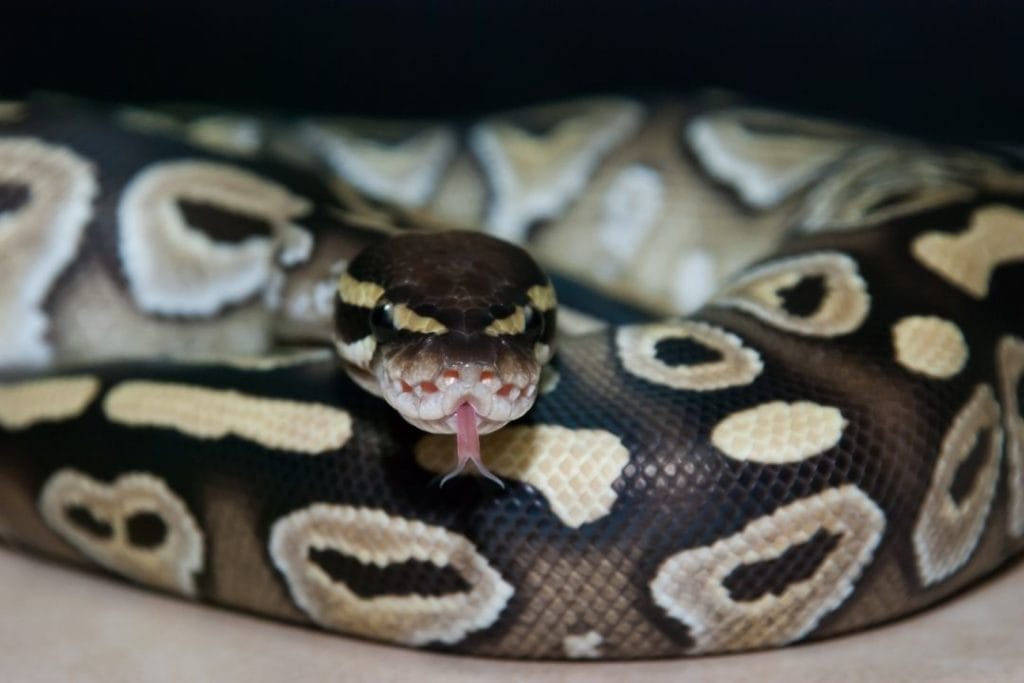
If you do not see these signs, you snake may be fine. However, a vet visit can’t hurt. You should definitely take your snake in if it has symptoms of a disease or if the snake is losing weight and body condition.
5. Seasonal and Natural Changes
Ball pythons naturally go through phases of hunger strikes. Many females will refuse to eat as they mature to adulthood.
Snakes in shed are typically too uncomfortable to eat. Animals may also stop feeding during the breeding season or during the incubation period for eggs.
Female ball pythons will care for their eggs until they hatch. During this time, females will refuse to hunt for prey.
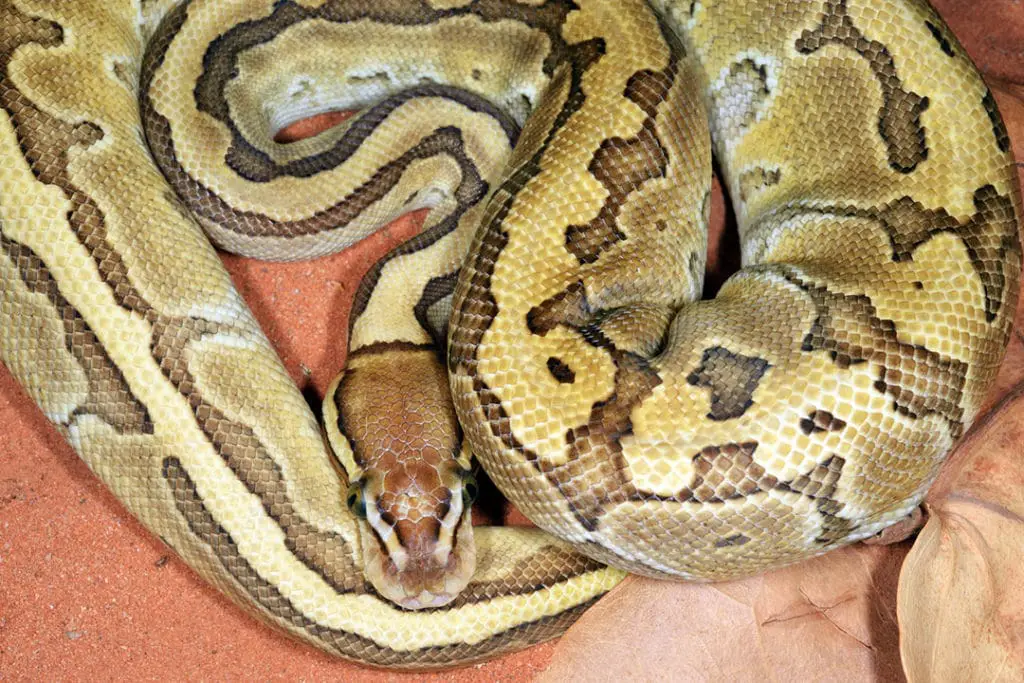
Even in captivity, they will refuse to eat. They may also refuse to eat during winter. Even snakes with heating year-round can refuse to eat once the temperature and light levels go down.
6. Feeding Too Often
A final reason that your ball python may be reluctant to eat is simply that it isn’t hungry. Young snakes eat one a week, but adults may wait 2 or 3 weeks between meals depending on the individual.
You could just offering food too often. Offering the wrong size of prey can also put your snake off its food.
Use a rat that is about the size of the thickest part of the snake. You may also need to leave a frozen/thawed in the cage to get it to eat.
When to Take Your Snake to the Vet
Ball pythons in the wild can go months without food. You don’t need to worry so long as your snake is still in good condition.
Once your snake is losing weight or hanging around extremist, you should head to the vet. They can offer advice help for your snake.
Conclusion
Ball pythons naturally go on feeding strikes. You do not need to worry unless your snake decides to get more dire. If you have any questions or comments, please leave them below.
